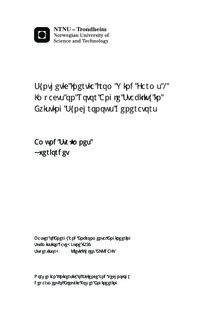Synthetic Inertia from Wind Farms - Impacts on Rotor Angle Stability in Existing Synchronous Generators
Master thesis
Permanent lenke
http://hdl.handle.net/11250/257944Utgivelsesdato
2014Metadata
Vis full innførselSamlinger
- Institutt for elkraftteknikk [2412]
Sammendrag
As the share of wind power in the power system rises, synchronous generators in traditional power plants are taken out of the grid and replaced by a large number of wind turbines. Most modern wind turbines utilize a power electronic interface between the generator and grid to allow variable speed operation of the turbine. By introducing the power electronic interface the wind turbine do not contribute to the rotational mass of the system or the frequency control. When the share of wind power becomes significant, the primary frequency response are influenced and the activation of primary reserves are challenged. To meet the demand for contribution to rotating mass, synthetic inertia emulation is proposed as a solution. There are numerous studies showing that synthetic inertia provides an important response from a frequency stability point of view. However, these models utilize weak representations of the grid, losing information about rotor angle stability. In this thesis a higher order simulation model is built in Simulink/Matlab to evaluate impacts on rotor angle stability from utilization of synthetic inertia. The main conclusions from the performed simulations are that the phase of the inertial response determines if the system damping is reduced, and that the inertia emulation should counteract frequency changes, not deviations. Also it is shown that the aggressiveness of the inverter tuning largely influences the damping of the oscillations in the system. However, a controller tuning is found where the system damping is acceptable and the inertial contribution from the wind farm is significant.
